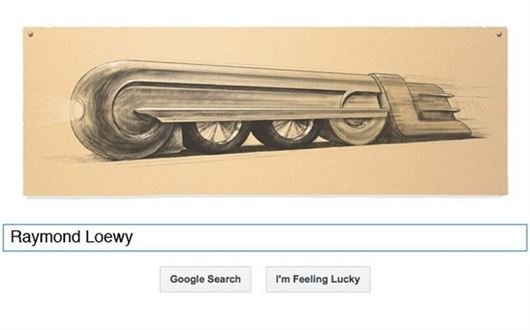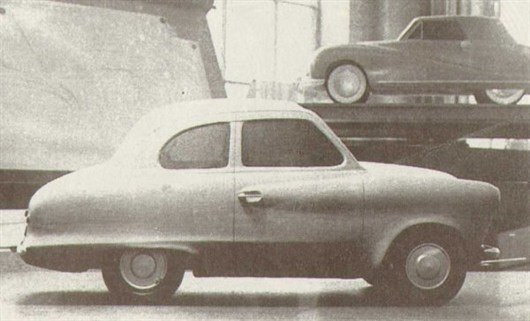Raymond Loewy honoured by Google

It's good to see that Google has decided to mark the 120th anniversary of the birth of ‘the father of industrial design’ Raymond Loewy. The striking image on the homepage of the Internet's most widely used website is of a locomotive engine design, penned by the great man himself.
Of course, you might be wondering why I'd be commenting on that within these pages, given that the Frenchman is best known for the iconic Coca Cola bottle (how many cars did that influence? Or at least, how many cars of the 1960s and '70s did we say were?), and his industrial designs for products ended up spanning cigrette packets to railway locomotives. But his automotive work was also astoundingly influential - especially in the USA throughout the 1940s, and then globally the following decades.
By the time he started working as an indendent styling consultant for the American car company Studebaker, he was already well established within the design community. He worked on products as diverse as the company's logo to its flagship car, the Starliner and the gorgeous Starlight. During his time at Studebaker, Loewy worked alongside the legendary designer Virgil Exner - the man who was one of the architects of the 1950s USA boom for fins and chrome.
But Loewy's continued work for Studebaker ultimately seemed diametrically opposed to Exner's. And that might explain why Exner he ended up moving on to Chrysler to create some of the most flamboyant production cars ever. While Loewy went the other way to design the 1962 Studebaker Avanti (below) - a car decades ahead of its time in design terms. I mean, look at that profile and tell me it wouldn't have worked as a modern car well into the 1980s...

Loewy had a fair amount of influence on the UK industry's work, too. And although the fact that the Rootes Group retained his services to undertake some big thinking during the 1950s - his delicate touch did help shape the 1956 Hillman Minx Series I - one of the company's more enduring cars. That work then went on to influence Rootes' classics that followed through the Rapier and through to the SuperMinx. Arguably, it only really made a clean break from Loewy's styling as late as 1966 with the launch of the first Hillman Hunter.
A lesser known British link also included BMC. Yes, really. The Raymond Loewy Organisation was consulted on the design of the Austin A30, and its Holden ‘Bob’ Koto proposed a streamlined rather Saab-like car, with minimal ornamentation. Austin's own Dick Burzi chose a less complex looking car (beow), with a pared-down version of the design vocabulary which was also to serve for the larger Somerset and Herford saloons, with an upright grille, and side pressings which hinted at the ghost of separate wings. But the overall look and feel of the A30 - and those subsequent cars - were clearly influenced by that car.
But arguably, with so many cars to his credit - both directly and indirectly, it could be argued that Loewy helped modernise the car industry, after a rapid period of post-WW2 growth. Design was very much to the fore, and it's thanks to pioneers like Loewy that we were able to see cars - even the most humble ones - as works of design, rather than just bland conveyences.
When he appeared on the cover of Time magazine in 1949, it said, 'Designer Raymond Loewy: He streamlines the sales curve'. How right they were. Go on, Google and see for yourself...

Compare classic car insurance quotes and buy online. A friendly service offering access to a range of policies and benefits.


 Keith Adams
Keith Adams
 NEC classic motor show 2020 postponed due to Covid 19 concerns
NEC classic motor show 2020 postponed due to Covid 19 concerns
 Classic car auction house Coys goes into administration
Classic car auction house Coys goes into administration
 Motor racing great Sir Stirling Moss dies aged 90
Motor racing great Sir Stirling Moss dies aged 90
 Alfa Romeo anniversary races set for Silverstone
Alfa Romeo anniversary races set for Silverstone
 Government to make E5 fuel available for classic owners
Government to make E5 fuel available for classic owners
 Plans to introduce cleaner fuel could damage more than a million classic cars
Plans to introduce cleaner fuel could damage more than a million classic cars
 Top 10: Classic cars from the Gulf motor racing heritage collection
Top 10: Classic cars from the Gulf motor racing heritage collection


